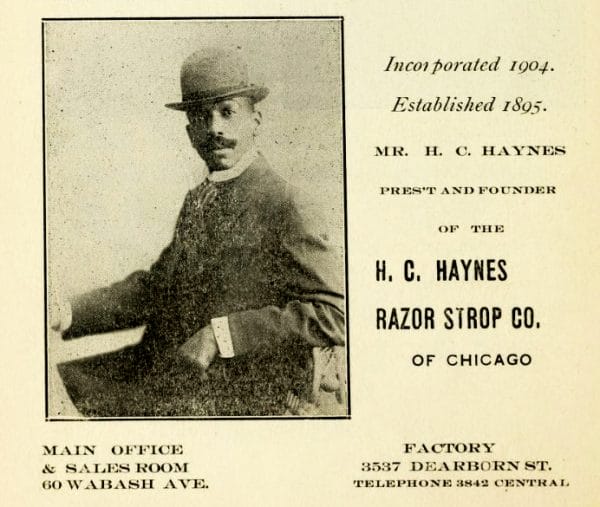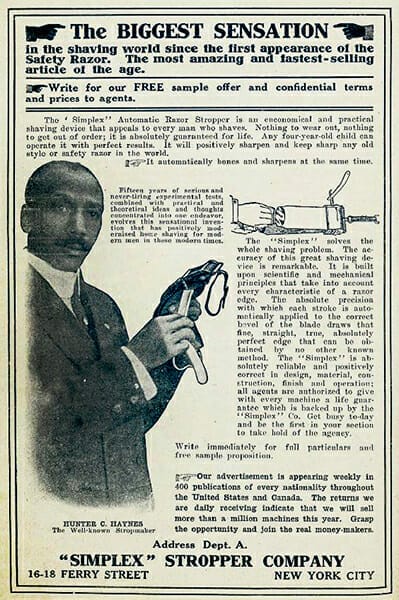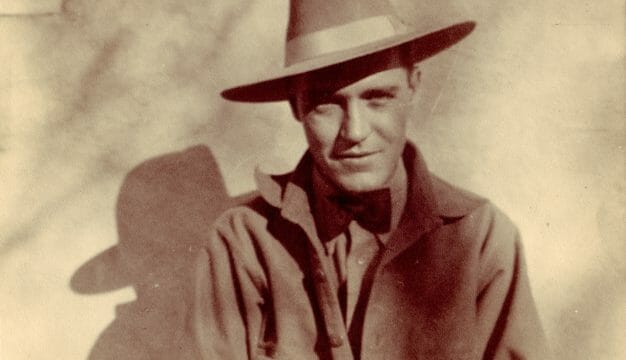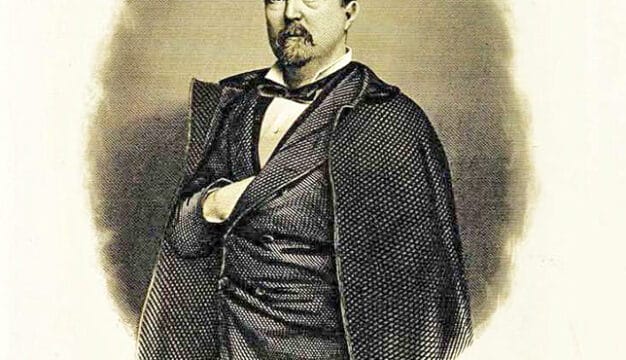Hunter C. Haynes
Hunter C. Haynes (1867-1918) was at various times in his life a barber, inventor, manufacturer, motion picture producer and director, and entrepreneur. His invention of the ready-to-use Haynes Razor Strop and his subsequent development of that invention into an international business brought him great success as an African American during the Jim Crow era.
 Haynes Advertisement, 1905
Haynes was born in Selma, Dallas County in 1867 to William Haines, a laborer, and Silvia Haines, a seamstress. Both of his parents were formerly enslaved. Haynes was the oldest of four children. At age 10, he worked outside a local hotel blacking boots, a method of giving the leather a black luster, and selling newspapers to guests of the hotel. Haynes’s father died during his youth, and some writers speculate that as the eldest son, Hunter left school to support his mother and younger brother and sisters after the loss of their father, but this was not the case. It was not uncommon for a boy to work on the farm as well as outside the home to help support the whole family.
Haynes Advertisement, 1905
Haynes was born in Selma, Dallas County in 1867 to William Haines, a laborer, and Silvia Haines, a seamstress. Both of his parents were formerly enslaved. Haynes was the oldest of four children. At age 10, he worked outside a local hotel blacking boots, a method of giving the leather a black luster, and selling newspapers to guests of the hotel. Haynes’s father died during his youth, and some writers speculate that as the eldest son, Hunter left school to support his mother and younger brother and sisters after the loss of their father, but this was not the case. It was not uncommon for a boy to work on the farm as well as outside the home to help support the whole family.
When he was 14, Haynes began his apprenticeship to become a barber, which lasted about 15 months. For a number of years, Haynes travelled around the country practicing his profession, living in cities such as Chicago and San Francisco. By the time Haynes turned 21, he had returned to Alabama, taking a position as a barber in Birmingham, Jefferson County. Haynes is listed in the Birmingham City Directory in 1888-90 as working in the G. W. Jones barbershop at 2413 3rd Avenue.
With the skills he learned and his savings, Haynes decided to return to Selma sometime between 1890 and 1894 to open his own barber shop. At the age of 27, he met Alice C. Reid of Dallas County; the couple married there on September 20, 1894. Alice was a school teacher in Selma.
Barbers of the time sharpened their straight razors on a strop, which was a strip of leather typically made from parts of old harnesses. Such strops had to be prepared each time a new one was needed, and Haynes saw a business opportunity in creating strops that were ready to use. By the 1890s, he had developed a strop that he was certain would be marketable to other barbers. Seeing limited opportunities for selling his invention in Selma, resulting in part from societal restrictions on African Americans in the South at the time, Haynes and his wife moved to Chicago, where Haynes appears on the Chicago Voters List in 1892. There, he opened a barbershop that served both black and white customers. Haynes also believed that his manufactured strop would appeal to both black and white barbers. He rented a building at 3658 Dearborn Street in Chicago and established a factory on the ground level; he and his wife lived on the second floor. In about 1895, Haynes established his marketing company to sell both strops and razors and opened a sales office at 60 Wabash Avenue. His company expanded significantly, and by 1899 it had become a large mail-order business through advertisements placed in barber magazines and other publications.
 Haynes Advertisement, 1912
Soon after, Haynes undertook a sales tour of the eastern United States as well as Halifax, Nova Scotia, in Canada. The tour provided him with sufficient capital to increase his wholesale business. He added shears to his product line and then went west to San Francisco on another sales tour, distributing about 200,000 circulars to barbers in Canada and across the United States. His success in the United States encouraged him to make a sales trip to London and establish a sales office there.
Haynes Advertisement, 1912
Soon after, Haynes undertook a sales tour of the eastern United States as well as Halifax, Nova Scotia, in Canada. The tour provided him with sufficient capital to increase his wholesale business. He added shears to his product line and then went west to San Francisco on another sales tour, distributing about 200,000 circulars to barbers in Canada and across the United States. His success in the United States encouraged him to make a sales trip to London and establish a sales office there.
In 1904, he established the Haynes Razor Strop Company in Chicago, a factory that could keep up with increasing demand for his products. His wife served as secretary and treasurer. Haynes expanded his sales force and added a small office staff to keep up with the increase in sales. He also partnered with German steel manufacturer Gottlieb and Hammesfaber to manufacture the strops for the U.S. and European markets. By 1905, Haynes was selling upwards of 8,000 razors, and Gottlieb and Hammesfaber was able to meet the extra demand. Haynes moved to New York City in 1906 and opened the N. Y. Razor Strop Company, located at 134 William Street. By that time, he apparently applied for a patent on his Twentieth Century Razor Stropper but may have sold that patent to a white-owned manufacturing house.
Haynes next became a producer for the white-owned Afro-American Film Company, which featured well-known black actors. He also became associated with the Vitagraph Motion Picture Company as a producer of comedies. In 1914, a comedy entitled Uncle Remus’ First Visit to New York was produced by the Haynes Photoplay Company, located in New York City. This film showcased a number of the black movie stars of the day, such as Abbie Mitchell, Tom Brown, Billy Harper, Wesley Jones, and Allie Gilliam. Haynes also expanded into the brokerage and loan business areas and for a time was in the truck and transfer (that is, shipping) business.
In 1917, Haynes, who had been diagnosed with tuberculosis, moved to Saranac Lake in upstate New York. At the time, Saranac Lake was a popular spa community for individuals seeking treatment for the disease. Haynes succumbed, however, on January 1, 1918. His funeral and burial were held in Selma. There is no record of Haynes and Alice having children.
Additional Resources
Sampson, Henry T. Blacks in Black and White: A Source Book on Black Films. Metuchen, N.J.: Scarecrow Press, 1993.
Stewart, Jacqueline Najuma. Migrating to the Movies: Cinema and Black Urban Modernity. Berkeley: University of California Press, 2005.



